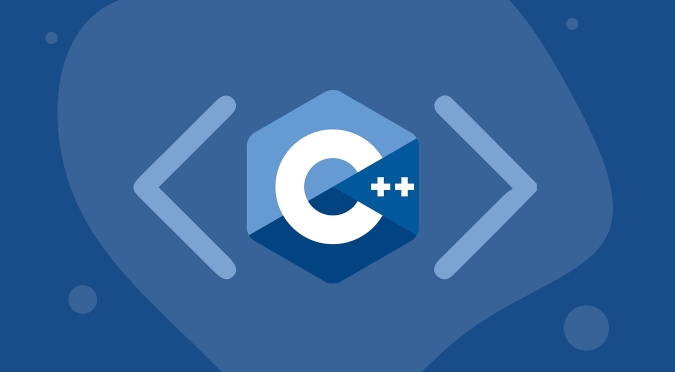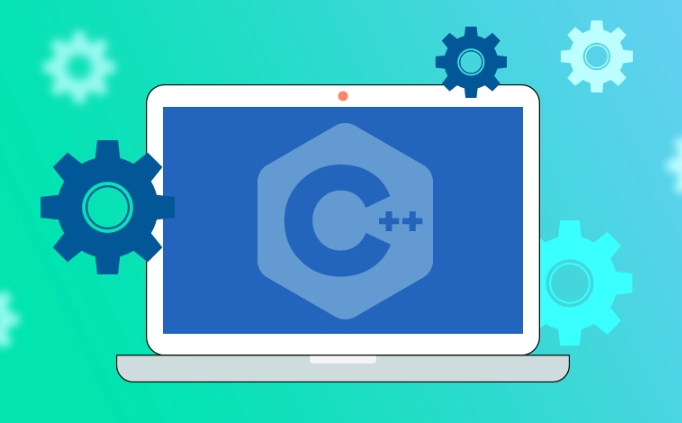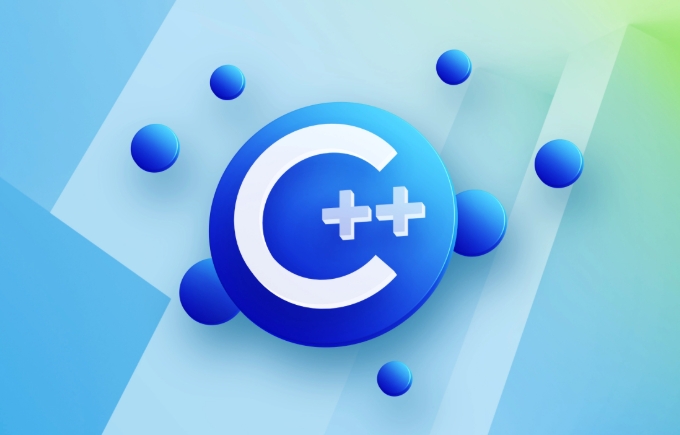C std::complex number example
std::complex is used to simplify complex operations in C. 1. It needs to include the <complex> header file; 2. You can use std::complex<double> (real part, imaginary part) to create complex numbers; 3. Support basic operations such as -, *, /; 4. Access the real imaginary parts through real() and imag(); 5. Use abs() to find the modulus, arg() to find the amplitude angle, norm() to find the modulus square; 6. conj() returns conjugated complex numbers; 7. exp() combines imaginary units to verify the Euler formula; 8. The polar() function can create complex numbers from polar coordinates. This template avoids manual implementation of complex operations and is widely used in fields such as mathematics and signal processing.

Here's a practical example of using std::complex in C:

Basic Usage of std::complex
The std::complex template in C (from the <complex></complex> header) lets you work with complex numbers easily. Here's a simple example showing creation, arithmetic, and common operations:
#include <iostream>
#include <complex>
#include <cmath>
int main() {
// Create complex numbers
std::complex<double> z1(3.0, 4.0); // 3 4i
std::complex<double> z2(1.0, -2.0); // 1 - 2i
// Output them
std::cout << "z1 = " << z1 << std::endl; // Output: (3,4)
std::cout << "z2 = " << z2 << std::endl; // Output: (1,-2)
// Arithmetic operations
std::cout << "z1 z2 = " << (z1 z2) << std::endl; // (4,2)
std::cout << "z1 - z2 = " << (z1 - z2) << std::endl; // (2,6)
std::cout << "z1 * z2 = " << (z1 * z2) << std::endl; // (11,-2)
std::cout << "z1 / z2 = " << (z1 / z2) << std::endl; // (-1,2)
// Access real and imaginary parts
std::cout << "Re(z1) = " << z1.real() << std::endl; // 3
std::cout << "Im(z1) = " << z1.imag() << std::endl; // 4
// Magnitude and phase
std::cout << "abs(z1) = " << std::abs(z1) << std::endl; // 5
std::cout << "arg(z1) = " << std::arg(z1) << std::endl; // ~0.927 (radians)
std::cout << "norm(z1) = " << std::norm(z1) << std::endl; // 25 (|z|²)
// Complex conjugate
std::cout << "conj(z1) = " << std::conj(z1) << std::endl; // (3,-4)
// Euler's formula: e^(iπ) = -1
std::complex<double> i(0, 1); // Imaginary unit
std::complex<double> result = std::exp(i * M_PI);
std::cout << "e^(i*pi) = " << result << std::endl; // Should be close to (-1,0)
return 0;
}Key Points
- Header : Always include
<complex> - Template types : Commonly
std::complex<double>, butfloatandlong doubleare also supported - Construction :
std::complex<double>(real, imag)or direct assignment like{a, b} - Operators :
-,*,/work as expected - Functions :
std::abs,std::arg,std::conj,std::norm,std::exp,std::polar, etc.
Using polar form
You can also create complex numbers from magnitude and phase:

double magnitude = 5.0; double angle = M_PI / 3; // 60 degrees std::complex<double> z_polar = std::polar(magnitude, angle); std::cout << "Polar to rectangular: " << z_polar << std::endl;
This is especially useful in signal processing or physics simulations.
Basically, std::complex handles the math so you don't have to implement complex arithmetic manually — and it integrates well with standard math functions.

The above is the detailed content of C std::complex number example. For more information, please follow other related articles on the PHP Chinese website!

Hot AI Tools

Undress AI Tool
Undress images for free

Undresser.AI Undress
AI-powered app for creating realistic nude photos

AI Clothes Remover
Online AI tool for removing clothes from photos.

ArtGPT
AI image generator for creative art from text prompts.

Stock Market GPT
AI powered investment research for smarter decisions

Hot Article

Hot Tools

Notepad++7.3.1
Easy-to-use and free code editor

SublimeText3 Chinese version
Chinese version, very easy to use

Zend Studio 13.0.1
Powerful PHP integrated development environment

Dreamweaver CS6
Visual web development tools

SublimeText3 Mac version
God-level code editing software (SublimeText3)
 How to compile and run a C program
Sep 16, 2025 am 05:29 AM
How to compile and run a C program
Sep 16, 2025 am 05:29 AM
InstallaC compilerlikeg usingpackagemanagersordevelopmenttoolsdependingontheOS.2.WriteaC programandsaveitwitha.cppextension.3.Compiletheprogramusingg hello.cpp-ohellotogenerateanexecutable.4.Runtheexecutablewith./helloonLinux/macOSorhello.exeonWi
 C custom allocator example
Sep 17, 2025 am 08:45 AM
C custom allocator example
Sep 17, 2025 am 08:45 AM
Custom allocator can be used to control the memory allocation behavior of C containers. 1. The LoggingAllocator in the example implements memory operation logging by overloading allocate, deallocate, construct and destroy methods; 2. The allocator needs to define value_type and rebind templates to meet the STL container type conversion requirements; 3. The allocator triggers log output during construction and copying, which is convenient for tracking the life cycle; 4. Actual applications include memory pools, shared memory, debugging tools and embedded systems; 5. Since C 17, construct and destroy can be processed by std::allocator_traits by default
 How to execute a system command in C
Sep 21, 2025 am 04:35 AM
How to execute a system command in C
Sep 21, 2025 am 04:35 AM
Use the std::system() function to execute system commands, which need to include header files and pass in C-style string commands, such as std::system("ls-l"), and the return value is -1, which means that the command processor is not available.
 How to implement a custom iterator in C
Sep 20, 2025 am 01:13 AM
How to implement a custom iterator in C
Sep 20, 2025 am 01:13 AM
The answer is to define a class that contains the necessary type alias and operations. First, set value_type, reference, pointer, difference_type and iterator_category, then implement dereference, increment and comparison operations. Finally, provide begin() and end() methods in the container to return the iterator instance, making it compatible with STL algorithms and range for loops.
 C abstract class example
Sep 15, 2025 am 05:55 AM
C abstract class example
Sep 15, 2025 am 05:55 AM
An abstract class is a class containing at least one pure virtual function. It cannot be instantiated and must be inherited as a base class. The derived class needs to implement all its pure virtual functions, otherwise it will still be an abstract class. 1. Pure virtual functions are declared by virtual return type function name()=0; to define interface specifications; 2. Abstract classes are often used for unified interface design, such as area(), draw(), etc., to implement polymorphic calls; 3. Virtual destructors must be provided for abstract classes (such as virtual~Shape()=default;) to ensure that derived class objects are correctly released through base class pointers; 4. After the derived class inherits, pure virtual functions must be rewrite, such as Rectangle and Circle to implement area() to calculate their respective areas; 5.
 Why do real-time systems need deterministic response guarantees?
Sep 22, 2025 pm 04:03 PM
Why do real-time systems need deterministic response guarantees?
Sep 22, 2025 pm 04:03 PM
Real-time systems require deterministic responses, because correctness depends on the result delivery time; hard real-time systems require strict deadlines, missed will lead to disasters, while soft real-time allows occasional delays; non-deterministic factors such as scheduling, interrupts, caches, memory management, etc. affect timing; the construction plan includes the selection of RTOS, WCET analysis, resource management, hardware optimization and rigorous testing.
 How to create a static variable in C
Sep 19, 2025 am 05:24 AM
How to create a static variable in C
Sep 19, 2025 am 05:24 AM
AstaticvariableinC retainsitsvaluebetweenfunctioncallsandisinitializedonce.2.Insideafunction,itpreservesstateacrosscalls,suchascountingiterations.3.Inaclass,itissharedamongallinstancesandmustbedefinedoutsidetheclasstoavoidlinkingerrors.4.Staticvaria
 How to read a whole file into a string in C
Sep 18, 2025 am 06:07 AM
How to read a whole file into a string in C
Sep 18, 2025 am 06:07 AM
Use std::ifstream and std::istreambuf_iterator to efficiently read the entire contents of the file to strings, including spaces and line breaks, and is suitable for medium-sized text files.





